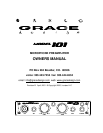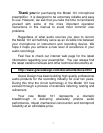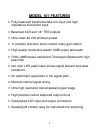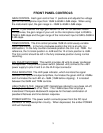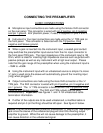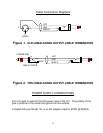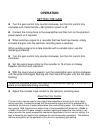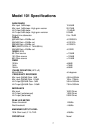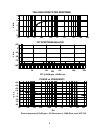
3
FRONT PANEL CONTROLS
GAIN CONTROL Each gain control has 11 positions and adjusts the voltage
gain on the microphone input from 10dB to 60dB in 5dB steps. When using
the instrument input, the gain range is –10dB to 40dB in 5dB steps.
NOTE: If you ordered the high gain version of the 101 for use with ribbon
microphones, the gain range of your unit on the microphone input is 20dB to
70dB in 5dB steps and the gain range of the instrument input is 0dB to 50dB in
5 dB steps.
TRIM CONTROL The trim control provides 10dB of continuously variable
output attenuation. In the fully clockwise position the trim is at unity (no
attenuation). In the fully counter-clockwise position the trim is at -10dB. For
reference, the 3 o’clock position is -4dB and the 12 o’clock position is -8dB.
The trim control should be left in the fully clockwise position during normal
recording.
48V PHANTOM POWER This switch provides 48 volts to power condenser
microphones. The phantom power switch (labeled +48) connects the +48V
power supply to pins 2 and 3 on the XLR input connector.
PEAK INDICATOR The LED peak indicator, which monitors the signal
between the input and output amplifiers, illuminates the green LED at -20dBu
and illuminates the red LED at +16dB (10dB before clipping). It is located
between the GAIN and TRIM controls.
HIGH PASS FILTER (labeled HPF) Sometimes referred to as a bass roll-off,
the high pass filter rolls off at 75Hz. This 12dB/octave filter employs a
transitional Thompson-Butterworth response for the best combination of
passband flatness and time domain response.
POWER SWITCH The power switch connects power from the DC input
connector to the preamplifier circuitry. When depressed, the amber POWER
LED will illuminate.



